HP Chromebook x2 11 Review
- Paul Thurrott
- Dec 01, 2021
-
17

Google and its hardware partners have an iPad problem. That is, as Apple has soared in the tablet market, Google has failed. The key issue, of course, is that too few developers have tailored their Android apps for anything other than smartphones. So where Apple and the iPad offer a seamless and first-class tablet experience, Google and Android do not.
But give Google some credit for trying. After failing again and again with various Android tablet initiatives, it went back to the drawing board and added Android app compatibility to Chrome OS. The theory here is that web apps were already designed for larger screens and could fill that role, while Android apps could fill in the gaps. It was a good idea. But most Chromebooks are still traditional laptops instead of tablets, let alone 2-in-1s or convertibles. And the iPad, which has since picked up its own 2-in-1 capabilities, remains untouchable.
Windows Intelligence In Your Inbox
Sign up for our new free newsletter to get three time-saving tips each Friday — and get free copies of Paul Thurrott's Windows 11 and Windows 10 Field Guides (normally $9.99) as a special welcome gift!
"*" indicates required fields
And that’s where HP comes in with its Chromebook x2 11. It’s a Chrome OS-based tablet 2-in-1—what HP calls a detachable—aimed at Gen Z and others who primarily use an Android smartphone for daily personal technology tasks but also sometimes need a larger, touch-based device for both entertainment and productivity. And that device cannot be an iPad.
Whether it can succeed remains to be seen. So let’s take a look.
Design
The HP Chromebook x2 is a striking aluminum tablet that very closely resembles Apple’s iPad Air, though it only comes in a plain but professional-looking silver color.

It has the same flat sides as the iPad Air, and is roughly the same size, though the iPad is lighter and a bit thinner.
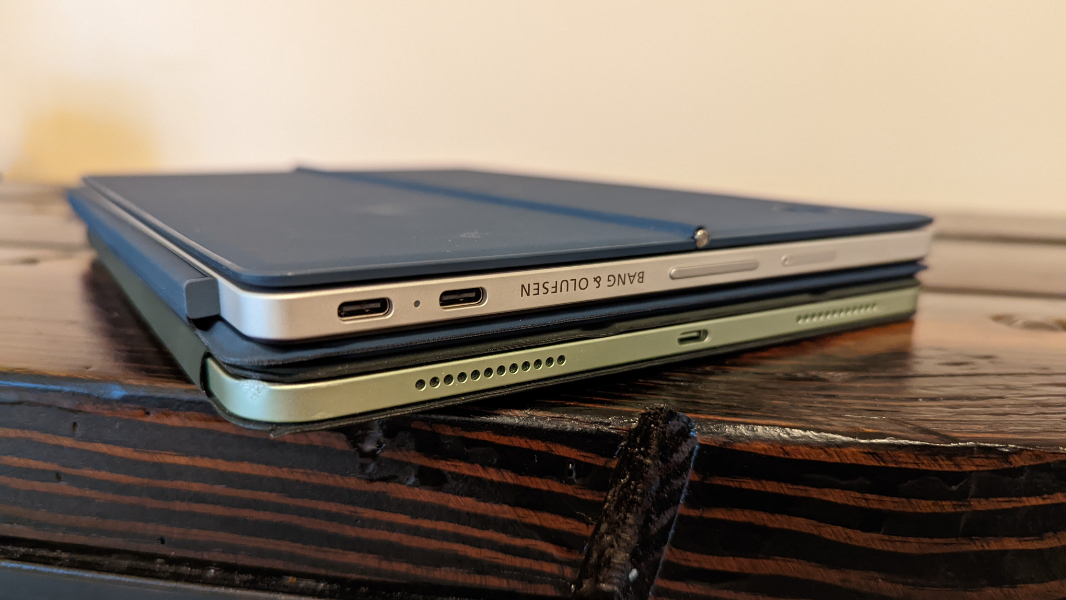
Even the medium-sized bezels, which match the device’s rounded corners, closely resemble those of the iPad Air. It’s a nice look.
But the HP differentiates itself from the iPad by shipping with two useful and related peripherals that connect quite securely via magnets. There’s a kickstand for the back, which supports multiple positions up to a maximum angle of 170 degrees, and I’ve found it to be quite sturdy.

And there’s a Surface Pro-like keyboard cover for the front with an integrated keyboard and touchpad. The keyboard cover acts as a cover while you carry around the x2, creating a nice folio-like effect.
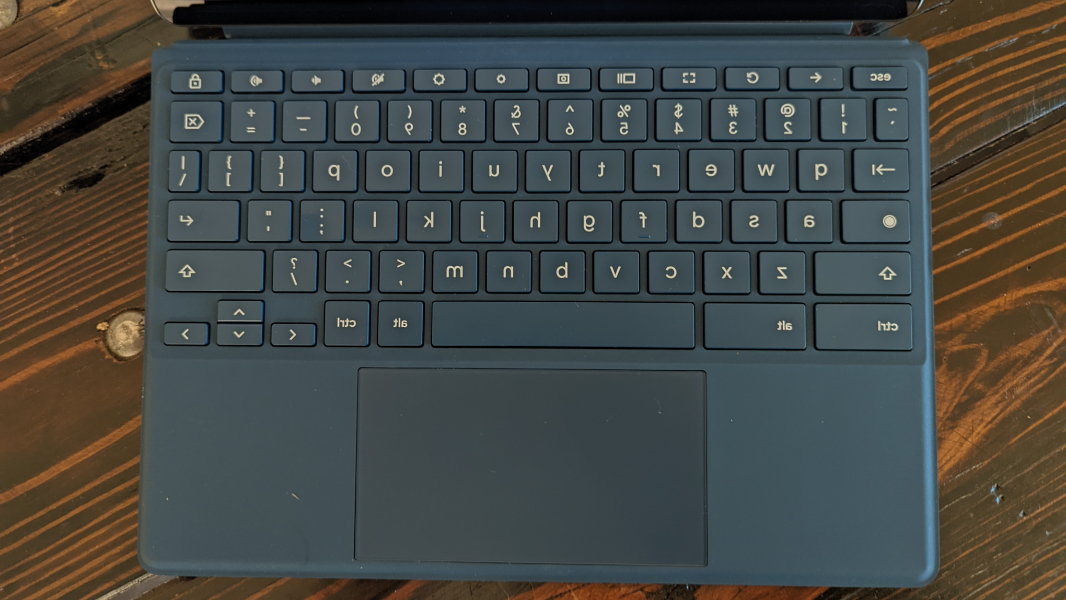
Together, these peripherals transform the x2 from a tablet into a productivity-focused 2-in-1 Chromebook. And they also hide the x2’s bland color, adding contrast and texture. It’s a nice look, overall.

Display
HP has received the memo on tablet displays: the Chromebook x2 sports a 2K (2160 x 1440) display with an ideal 3:2 aspect ratio that will look good whether you’re using it in landscape mode, like a laptop, or in portrait mode as a tablet. It emits 400 nits of brightness, which is perfect for indoor use but inadequate outdoors on bright, sunny days, And it’s a matte rather than glossy affair, which I prefer for productivity work especially. It’s also protected by Gorilla Glass 4.
Internal components
The HP Chromebook x2 11 is powered by an entry-level Qualcomm Snapdragon 7c processor with an integrated Adreno 618 GPU, 4 or 8 GB of RAM, and 64 GB of slow eMMC storage, so you won’t be surprised to discover that it’s not a performance champion: even Chrome OS puts the hurt on this lowly chipset, especially if you use multiple Chrome tabs or windows, or want to run Android apps alongside your web apps.
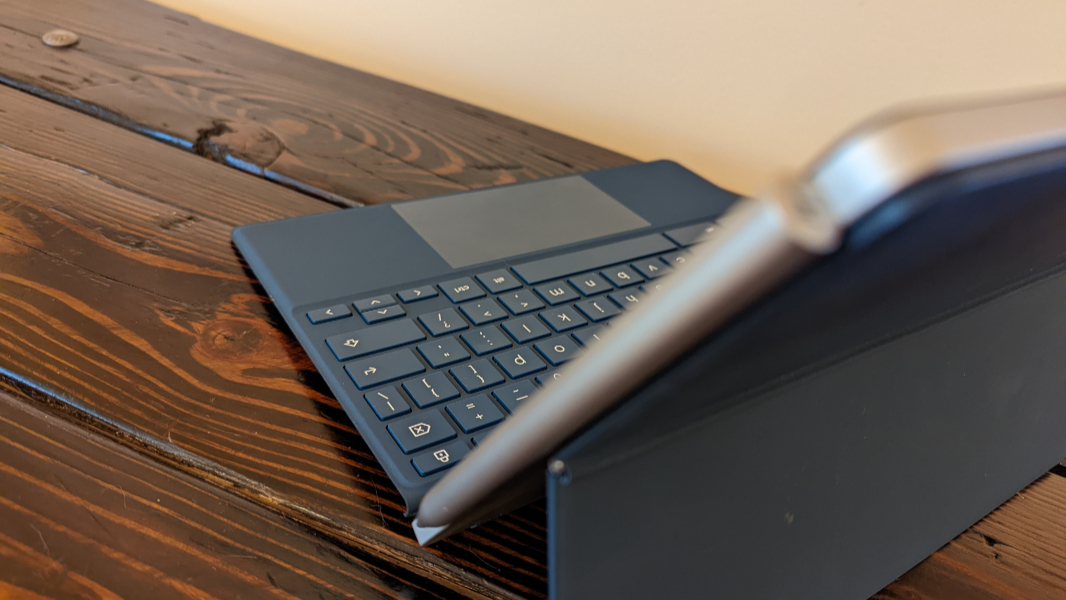
In the good news department, the x2 runs silently, and it never generated any heat to speak of. And many common actions, like screen rotation, happen quickly enough. It’s roughly comparable, overall, to Microsoft’s Surface Go line of mini 2-in-1s.
Connectivity
The x2 provides Wi-Fi 5 (802.11ac) and Bluetooth 5.0, and some models can be had with an LTE-compatible SIM card slot as well. Notably, each of these is a generation (or two) behind the most recent connectivity standards, but I never had any issues.
Ports and expansion
As you might expect of a tablet, the HP Chromebook x2 11 offers a minimal level of expansion, with two SuperSpeed USB-C ports on the left; this is the least impressive form of USB-C, and it offers just 5 Gbps of data transfer performance. Either of these ports can be used for power.
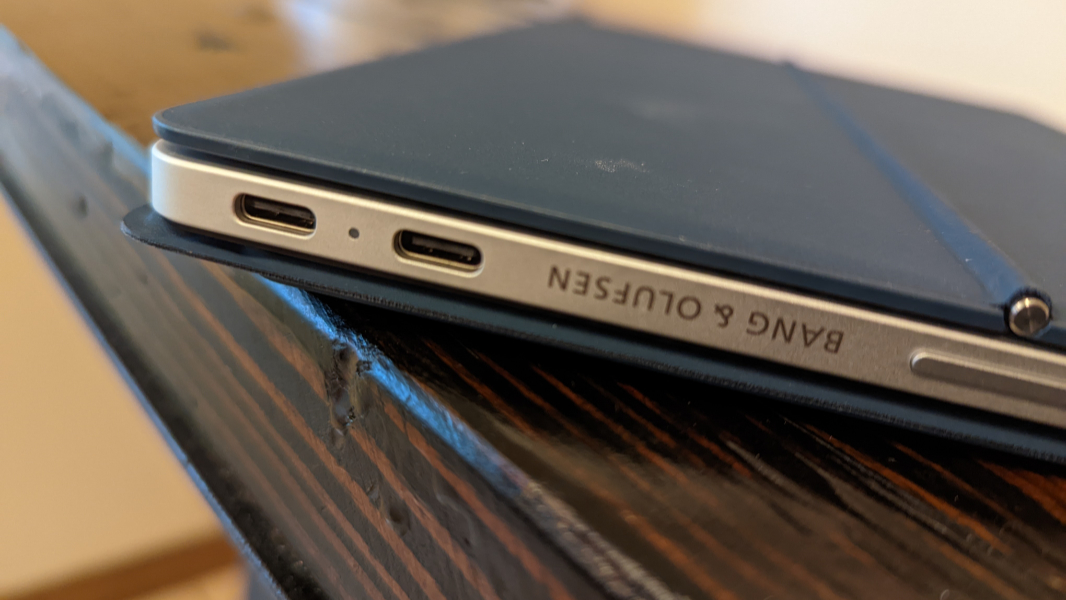
Beyond the USB-C ports, some x2 models offer LTE connectivity, and if that’s present, as it is on the review unit, you’ll find an LTE card slot on the left side of the device as well, above the volume buttons and the USB ports.
The power button is on the top left, and there is a magnetized area on the right side of the device that can securely hold a USI smartpen, which is available with some models or available separately. It does a surprisingly good job of holding the pen, but I’d still be careful of it while traveling.
Audio and video
The HP Chromebook x2 contains two webcams, a 5 MP wide-angle front-facing camera, and an 8 MP rear-facing camera. Combined with a built-in microphone, the x2 provides passable web meeting capabilities. I never tested the rear camera and don’t understand why anyone would want or need such a thing.
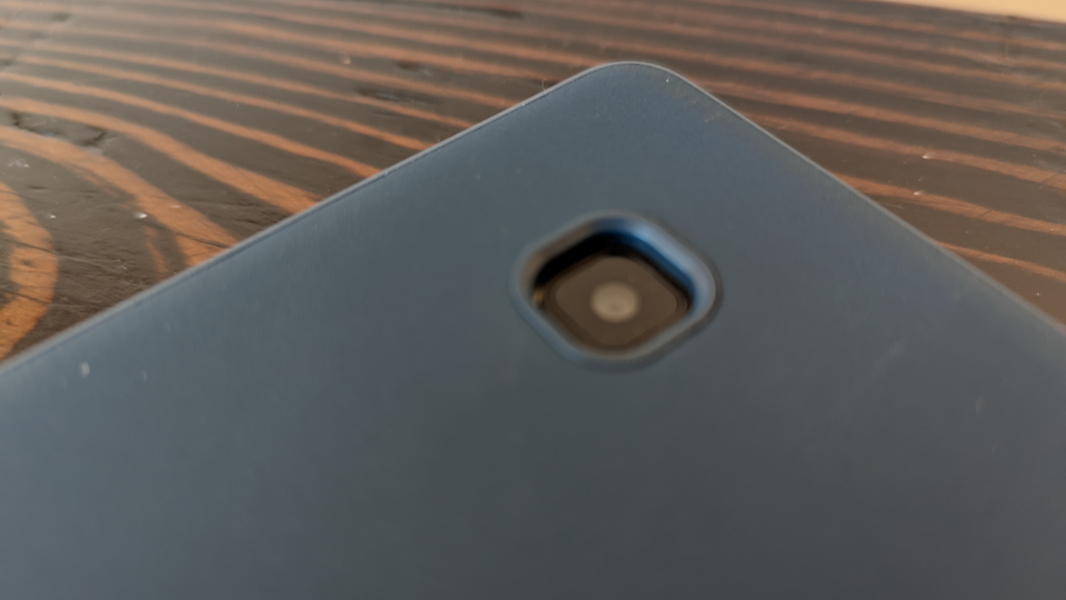
(Update: since writing this, I learned that the latest version of Chrome OS, which hasn’t yet downloaded to the x2, supports document scanning capabilities via a rear webcam. So that is indeed useful.)
The x2 also offers decent-sounding stereo speakers, tuned as always by Bang & Olufsen, and they pair well with the 2K display to provide a nice video-watching experience. I wasn’t able to crank up the music all the way in YouTube Music without some distortion, but Mad Max Fury Road looked and sounded great, even at 100 percent volume.
There is no headphone jack, curiously.
Keyboard, touchpad, and pens
Given its 11-inch form factor, it’s no surprise that the bundled keyboard cover delivers a somewhat lackluster typing experience, with a cramped keyboard, small, non-backlit keys, and a lot of flex and key noise.
Thanks to my large hands and my unfamiliarity with some of the unique limitations of the Chrome OS keyboard layout, however, I struggled to type this review accurately on the x2. And I found myself unable to quickly navigate through the words in the underlying document efficiently because my long history with Windows keyboard shortcuts often didn’t translate to this platform.

That won’t be an issue for some customers, of course. But what will be an issue for anyone who buys this Chromebook is that the keyboard cover is borderline unusable unless it’s placed on a desk or other hard, sturdy surface. When I tried to type on it while lying on a bed or couch, I experienced frequent and regular phantom touchpad clicks which move the mouse cursor and, in some cases, cause unintentional actions on-screen. That’s not just frustrating, it’s a deal-breaker.
That said, I like that HP bundles this cover with the device, and the keyboard is probably adequate for those who only occasionally need the bigger screen for traditional, PC-like productivity tasks. The touchpad works well, and it supports Chrome OS gestures.

And as is the case with Surface Pro 8, the keyboard can be laid flat or angled. In the latter case, it’s held up against the bottom of the x2 using magnets.
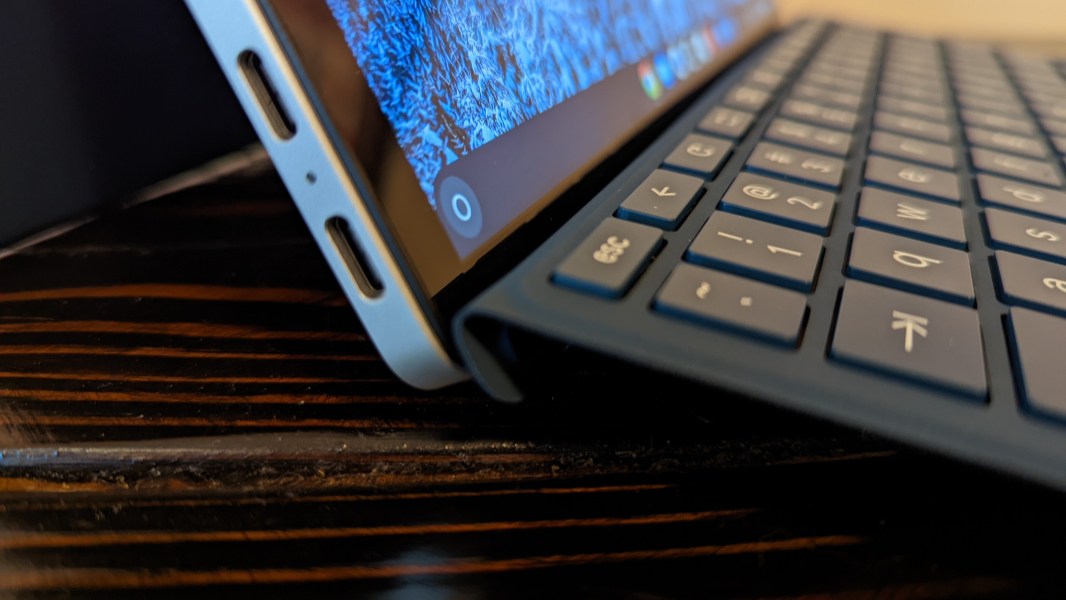
Oddly, the star of the show is HP’s Wireless Rechargeable USI Pen, which was included with the review unit but is only available with one of the three x2 configurations. Fortunately, you can purchase it separately, and if you do buy an x2, you may want to. Despite the generally low cost of this device and its middle-of-the-road performance, this smartpen works really well, works for up to 20 days on a charge, and charges automatically when magnetically connected to the device’s side, a nice touch. It’s no Surface Slim Pen 2, but it comes surprisingly close.
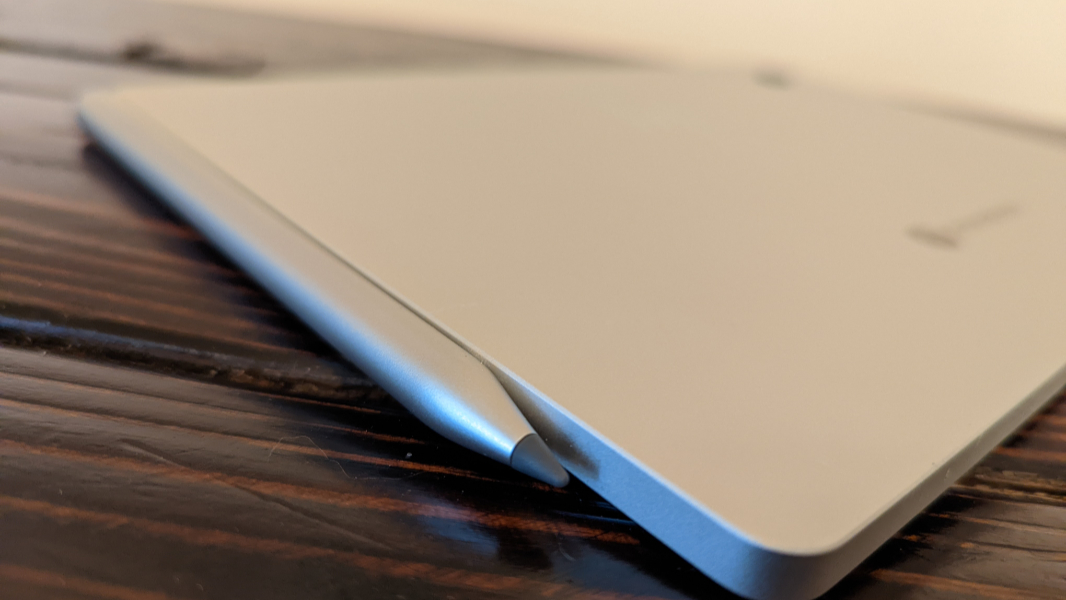
(Those interested in the pen should also check out Google Cursive, a handwritten note-taking app, and Concepts, a sketching app, both which come bundled with the x2.)
Unique hardware features
The x2 offers an integrated fingerprint reader on its small power button, and it worked reliably.
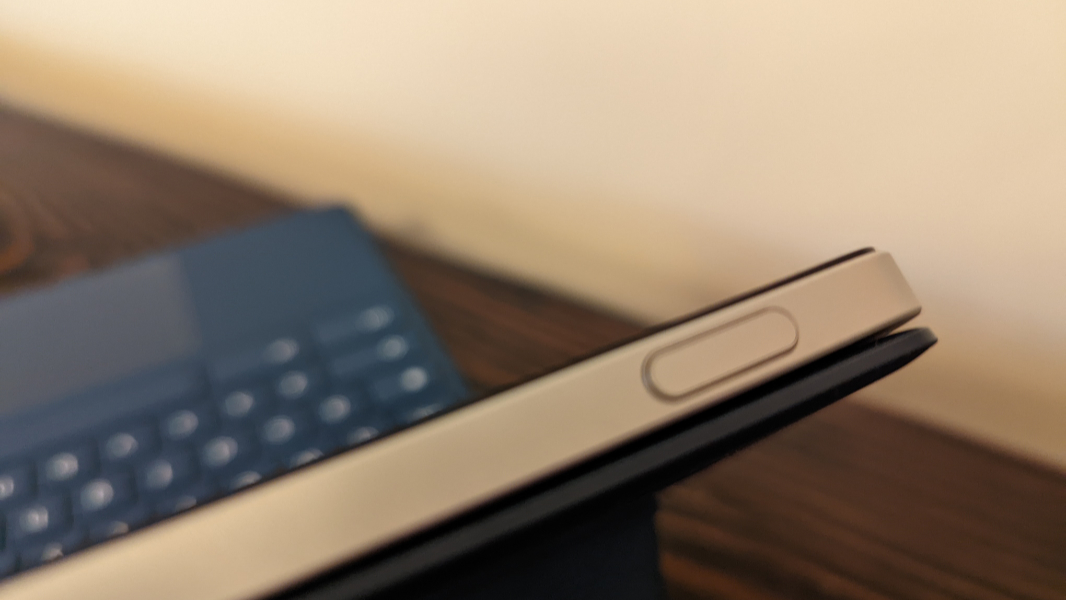
Portability
At 1.23 pounds (sans keyboard and kickstand), the Chromebook x2 11 is significantly heavier than the iPad Air that it closely resembles: Apple’s premium tablet weighs just 1 pound. The x2 is also a bit thicker, at 0.3 inches vs. 0.24 inches. Whatever, it’s still incredibly portable and much smaller and lighter than most Chromebooks and PCs.

Battery life is a mystery: I don’t have a formal way of measuring battery uptime with Chrome OS, and as a smaller, secondary device, I didn’t really use it for long stretches of time. So I can only report that, anecdotally, I seemed to get about 7-8 hours of battery life on a charge.
Software
The HP Chromebook x2 11 comes with a very clean version of Chrome OS, a limited but crapware-free platform that primarily runs web apps. It is, however, also compatible with Android apps, which are acquired via the same Google Play Store that’s found on Android smartphones and devices. The issue is that many, perhaps most, of these apps are not tailored for the larger displays found on tablets like the x2. So you will have to deal with using small phone-shaped apps, or full-screen apps that don’t take advantage of the extra on-screen real estate.
Less obviously, you will also run into issue in which the apps you wish to use are available on the web and on Android: these apps often offer different functionality, with one version being better in some ways and other being better in others. So you will need to test and experiment to find which you prefer in these cases. Generally speaking, I’ve found that web apps run much better on the x2 (and other Chromebooks) than do Android apps.
But there are very real advantages to Chrome OS, especially for those who use an Android handset. You can integrate your handset very easily with the Chromebook and access your phone’s notifications and browsers tabs via an interface called Phone Hub. And HP builds on this functionality by bunding Cursive and Concept, as noted above, and its web app version of QuickDrop with the x2. That latter application lets you share photos and other files between your handset and Chromebook wirelessly. (You have to install QuickDrop on the phone as well.)
Overall, this is the right mix of functionality for a secondary computing device, and it should serve the needs of its target markets ably.
Pricing and configurations
The HP Chromebook x2 starts at $579 for a model with 4 GB of RAM, 64 GB of eMMC storage, a Night Teal keyboard cover, and LTE capabilities, but no pen.
A better deal, however, is a Best Buy configuration that includes 8 GB of RAM, 64 GB of storage, a Night Teal keyboard cover, and the pen, but no LTE. That version normally costs $599 … except when it doesn’t. As it turns out, Best Buy routinely offers this device at a significant discount—$399—and as I write this, the price there is an even lower $349. That’s a great value.
HP also offers a higher-end configuration with 8 GB of RAM, 64 GB of storage, a Shade Gray keyboard cover, LTE, and no pen for $679.
Recommendations and conclusions
As a secondary device, the HP Chromebook x2 11 almost fits the bill. But its lackluster performance and dodgy keyboard cover are problematic, and I would only recommend this device to someone comfortable with those limitations. It’s a much better deal on sale, of course, so if you can get the Best Buy configuration, I recommend doing so. I also recommend considering the stellar HP Wireless Rechargeable USI Pen, as it completes the package and helps the x2 become a more viable alternative to Microsoft’s Surface Go line.
At-a-glance
Pros
- Great 3:2 display
- Bundled keyboard cover and kickstand
- Excellent (but usually optional) Wireless Rechargeable USI Pen
- Cellular data option
- Nice integration with Android smartphones
Cons
- Performance is lackluster
- Keyboard cover is unreliable, especially on soft or non-flat surfaces